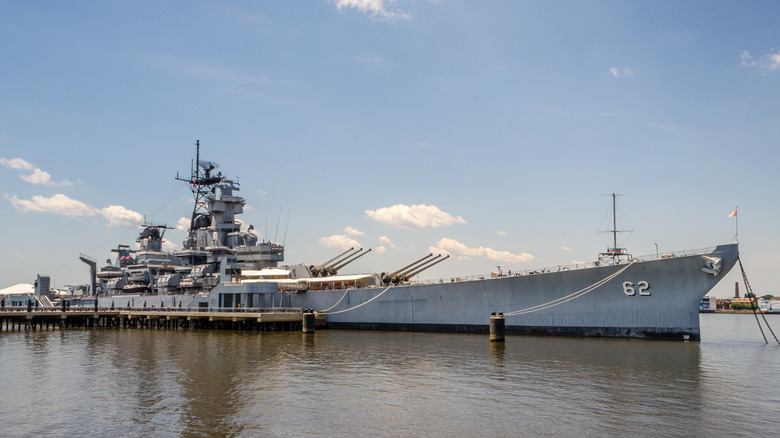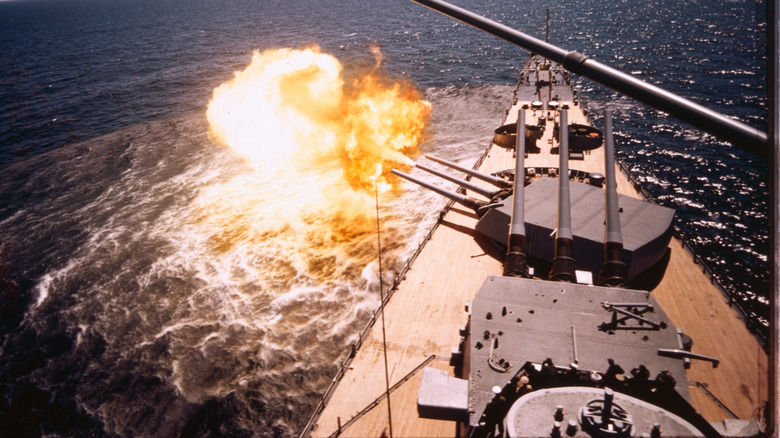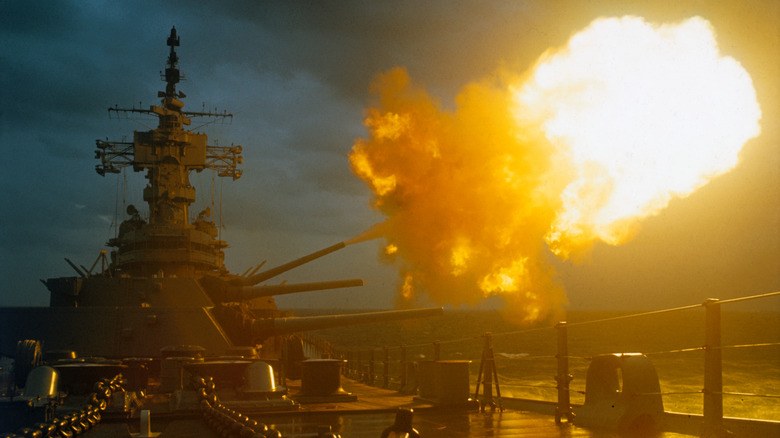All About The Most Decorated US Battleship: The USS New Jersey
The destruction of a portion of the U.S. Pacific Fleet by the Japanese attack on Pearl Harbor on December 7, 1941, guaranteed the America's entry into the war and jumpstarted naval shipbuilding. The attack sunk eight battleships that day, which included the U.S.S. Arizona, U.S.S. Oklahoma, U.S.S. West Virginia, U.S.S. California, U.S.S. Nevada, U.S.S. Pennsylvania, U.S.S. Tennessee, and the U.S.S. Maryland. The military had to replace those losses as quickly as possible, while updating the firepower and capabilities of the battleship to take on and defeat the Japanese. So was born the U.S.S. New Jersey.
The New Jersey was part of a new type of battleship, the Iowa-class. It and her three counterparts, the U.S.S. Iowa, U.S.S. Missouri, and U.S.S. Wisconsin, were the epitome of naval power. Commissioned on May 23, 1944, the New Jersey weighed in at 45,000 tons, ran 887 feet, had a rated speed of 33 knots and boasted armor of up to 18 inches (depending on the location). The ships firepower was impressive as it was outfitted with three turrets of Mark 7 16-inch gun barrels that could fire rounds up to 23 miles. Additionally, the ship was outfitted with 20 five-inch guns arrayed in 10 twin-mount turrets that were effective against both land and air targets at a distance of nine miles. Finally, the New Jersey had an array of additional anti-aircraft guns including 16 quadruple mounted 40mm guns and 49 single 20mm guns. Commanded by Capt. Carl F. Holden, the New Jersey joined the Fifth Fleet on January 22, 1944 to begin its historic naval combat career.
Major actions of World War II
After joining up with the Fifth Fleet as part of the effort to reclaim the Marshall Islands, the New Jersey provided valuable fire support and aircraft carrier protection duties between Jan. 25 and Feb. 4, 1944. These actions helped lead to the capture of key Japanese bases on the Kwajalein and Eniwetok atolls in the Marshall's, thus starting the island-hopping campaign. After this victory, Admiral Raymond A. Spruance made the New Jersey his flagship, raising his four-star flag on Feb. 4, 1944. The New Jersey would soon spearhead the admirals Operation Hailstone which was the planned attack on the Japanese Combined Fleet at Truk in the Caroline Islands on Feb. 11, 1944. After fending off Japanese planes and dodging torpedoes, the battleship personally destroyed a minesweeper and a destroyer in the battle in the victorious campaign.
The New Jersey continued to play a vital role in key campaigns and battles for the remainder of the war. These included the Palau Islands where she protected aircraft carriers and shot down a Japanese plane in a rare night attack and the Marianas invasion where the New Jersey's gun bombarded Japanese positions. The ship was heavily involved in the battles of the Philippine Sea, Leyte Gulf and the Philippine Islands, with Adm. William F. Halsey making the New Jersey his flagship in August 1944. The final year of the war would see the battleship through heavy action in Iwo Jima and the Ryukyus, where it would stay until after the war.
After World War II, it saw recognition and awards
The battleship New Jersey's war-time service did not end with its decommissioning in June 1948. In fact, it would be recommissioned several more times. The first was during the Korean War, where its guns were brought to bear in tours during 1951 and 1953. The New Jersey would next be recommissioned in April 1968 for service during the Vietnam War, becoming the world's only operating battleship. Once the ship was fitted with new electronics and a helicopter landing pad she would proceed to Vietnam where the vessel would fire nearly 10,000 rounds of ammunition on enemy targets. Decommissioned after its Vietnam service in December 1969, the New Jersey was called on for one final duty assignment. Recommissioned personally by President Ronald Reagan on Dec. 28, 1982, who referred to the New Jersey as "this magnificent ship," the ship was updated with Tomahawk Cruise Missiles before firing its guns during the Lebanon Crisis of 1983 through 1984. The New Jersey would see further stints in the Pacific and the Persian Gulf before its final decommissioning in February 1991.
The New Jersey has earned many accolades for its long history of service to the United States. First is that it holds the distinction of the longest service of any battleship. Adding to this are the 19 commendations and awards that make it the most decorated battleship in U.S. history. Some of these include nine battle stars for World War II, four for the Korean War and two battle stars along with a Navy Unit Commendation for the Vietnam War. The legacy and story of the U.S.S. New Jersey carries on in its present mission as a museum ship in Camden, New Jersey.


